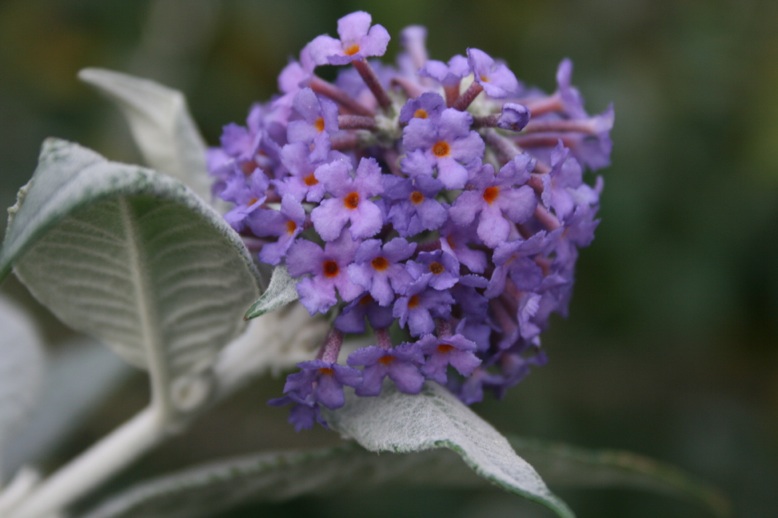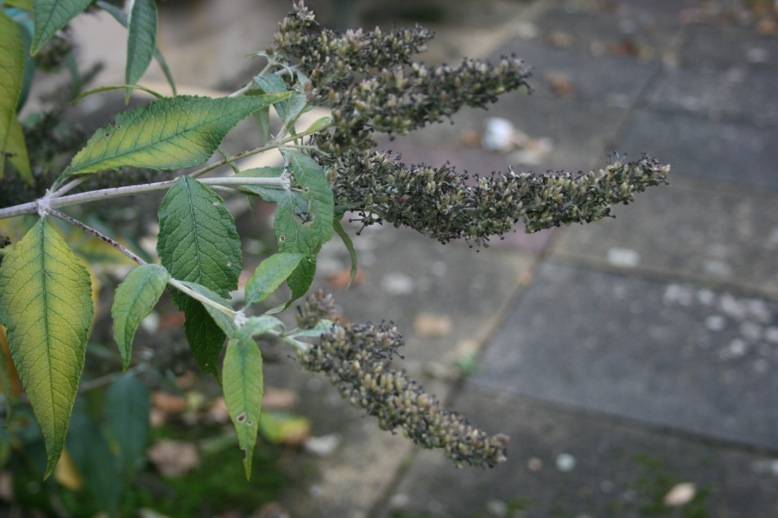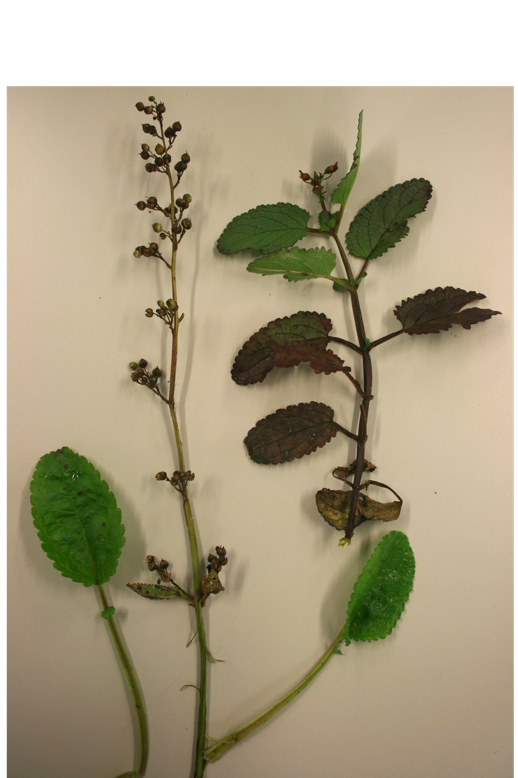Several species of the Scrophulariaceae can be found on Whiteknights campus, notably the Figworts and Mulleins as well as Buddleja davidii, commonly known as Butterfly bush (Le Grice & Jury 2011). The strongly scented flowers of Buddleja are an example of one of the two distinct flower types of the Scrophulariaceae in that the corolla is fused into a 4 lobed tube. Another conspicuous characteristic of Buddleja davidii is that these flowers are then arranged in long, dense, panicles.
Buddleja davidii may be found on waste land, and in my experience it can be readily spotted at the side of railway tracks, easily distinguished by its dense spikes of purple/lilac flowers and long arching branches reaching up to 5 metres.
The second distinct flower type of Scropulariaceae is where the corolla is fused into a two-lipped flower as in the figworts, e.g. Water Figwort (Scrophularia auriculata), in which the two-lips of the flower are further divided into a 2 lobed upper and 3 lobed lower lip. Figworts are further characterised from the rest of Scrophulariaceae by the 4-angled stems which are square in section.
Scrophularia auriculata reaches a height of about 1.2 meters tall, and is one of the most conspicuous of figworts with red-yellow flowers brighter than other figwort species and conspicuously winged stem angles, which is also what distinguishes it from the common figwort.
Scrophularia auriculata is a lover of damp places, often found on the banks of rivers as indeed it is found on the banks of Whiteknights lake. By contrast, Buddleja davidii can be found in a very different habitats and is very characteristic of disturbed and waste ground and one such place on campus is near the agriculture building car park growing against a wall.
Reference:
Le Grice, D. & Jury, S.L. 2011. The Flora of Whiteknights Park. Unpublished BSc Dissertation, University of Reading.




